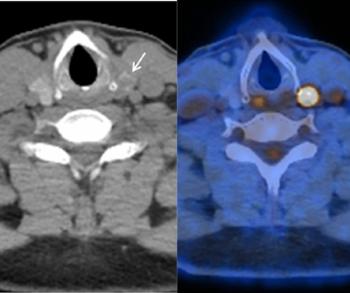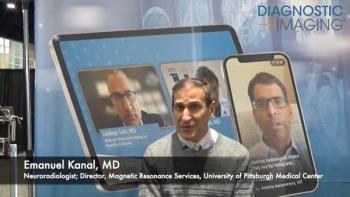
Report from RSNA: 64-slice CTA bests SPECT in patients with coronary disease
The era of 64-slice CT angiography as a tool to rule out cardiac catheterization in patients with an intermediate risk of coronary artery disease moved closer to reality at the RSNA meeting. A study confirming its superiority over dual-isotope SPECT for identifying CAD in these patients was reported in a Monday session.
The era of 64-slice CT angiography as a tool to rule out cardiac catheterization in patients with an intermediate risk of coronary artery disease moved closer to reality at the RSNA meeting. A study confirming its superiority over dual-isotope SPECT for identifying CAD in these patients was reported in a Monday session.
Dr. Tamar Gaspar of the Carmel Medical Center in Haifa, Israel, established the superiority of 64-slice CTA over SPECT by retrospectively examining 75 symptomatic patients who underwent both tests. SPECT analysis was performed using a 17-segment model, with perfusion defects graded visually on a four-point scale based on uptake and the likelihood of significant stenosis.
Patients with slightly reduced radiopharmaceutical uptake were then evaluated for the presence of greater than 50% coronary stenosis, signifying significant CAD, on multislice CT. Beta blockers were administered whenever required. Imaging was performed on a 64-slice Philips Brilliance 64 scanner, and the effective radiation dose averaged 12.9 mSv.
MSCT identified significant stenosis in one-third and excluded it in two-thirds of patients who showed grade 1 mild reversible perfusion defects on SPECT. Of the 79 coronary vascular territories shown to have mild reversible perfusion defects with SPECT, 25 were diagnosed as normal with 64-slice CT. Invasive x-ray coronary angiography performed on 21 patients confirmed 81% of the coronary CT findings.
CCT was responsible for four false positives. No false negatives were identified among the eight patients who underwent invasive angiography after a negative CT finding.
Unnecessary invasive procedures are avoided by applying CCTA to patients suspected of mild or intermediate disease, Gaspar said.
"If we can show normal coronaries on CT and take into account the high negative predictive value of CT for CAD, which is very well established, we won't have to refer these patients for invasive angiography, though they have had mild findings on SPECT," she said.
For more online information, visit Diagnostic Imaging's
Newsletter
Stay at the forefront of radiology with the Diagnostic Imaging newsletter, delivering the latest news, clinical insights, and imaging advancements for today’s radiologists.



























